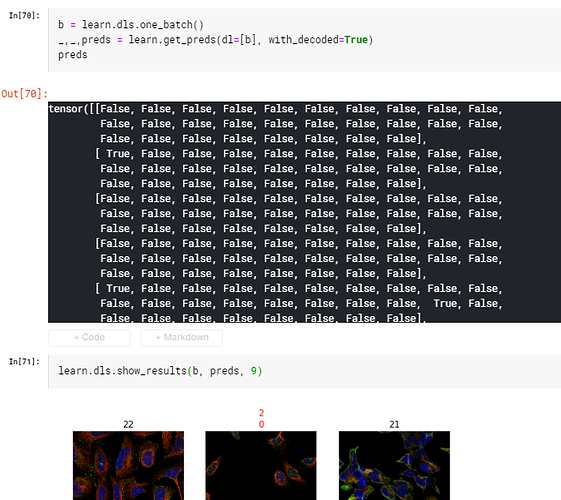Thanks, I think I understand now  So I could do the following then?
So I could do the following then?
tl = TfmdLists(items[:10], pipe)
dl = tl.dataloaders(bs=1)
If so I get a PosixPath object is not iterable error. (this is just passing in a list of items.) If I try passing in instead a list of x’s and y’s from a dset I get “TypeError: int() argument must be a string, a bytes-like object or a number, not ‘PILImage’”
(said code from tutorial and how I set it up):
class SiamesePair(Transform):
def __init__(self,items,labels):
self.items,self.labels,self.assoc = items,labels,self
sortlbl = sorted(enumerate(labels), key=itemgetter(1))
# dict of (each unique label) -- (list of indices with that label)
self.clsmap = {k:L(v).itemgot(0) for k,v in itertools.groupby(sortlbl, key=itemgetter(1))}
self.idxs = range_of(self.items)
def encodes(self,i):
"x: tuple of `i`th image and a random image from same or different class; y: True if same class"
othercls = self.clsmap[self.labels[i]] if random.random()>0.5 else self.idxs
otherit = random.choice(othercls)
return SiameseImage(self.items[i], self.items[otherit], self.labels[otherit]==self.labels[i])
class SiameseImage(Tuple):
def show(self, ctx=None, **kwargs):
img1,img2,same_breed = self
return show_image(torch.cat([img1,img2], dim=2), title=same_breed, ctx=ctx)
OpenAndResize = Transform(resized_image)
labeller = RegexLabeller(pat = r'/([^/]+)_\d+.jpg$')
sp = SiamesePair(items, items.map(labeller))
pipe = Pipeline([sp, OpenAndResize])
dset = pets.datasets(src)
tl = TfmdLists(dset[:10], pipe)
dl = tl.dataloaders(bs=1)
This is because i at this point is an image itself and a label
Sorry just the answer isn’t obvious to me on how to go from A->B here 


